Restaurant
Also, Relaxing Desert Camp offers restaurant services. Where we have the best Moroccan cuisine chefs and cooks who are mastering Moroccan cuisine besides other world cuisines such as Italian, Spanish, and French. We are serving delicious recipes and different drinks. So, even if you love to taste Moroccan delicious meals or you would love foreign meals, you will find your preferred ones. At Relaxing Desert Camp, usually we serve breakfast and dinner but if anyone of our clients wants to add more meals, we just offer them for him/her. Some of our served recipes include Moroccan Tagine in different types (with fish, chicken, beef…), Couscous, Medfouna (a staffed delicious bread), Salads (accordingly), and other recipes. And of course, the Moroccan tea, the most wanted drink. What is special about our services is that you can ask and reserve whatever you wish to eat and it will be prepared for you. In addition, our cuisine is 100% trusted. To know more about our restaurant don’t hesitate to ask us, we would love to hear from you. Contact us if you have any special food you take, if it’s possible, we can serve it for you.
Restaurant services
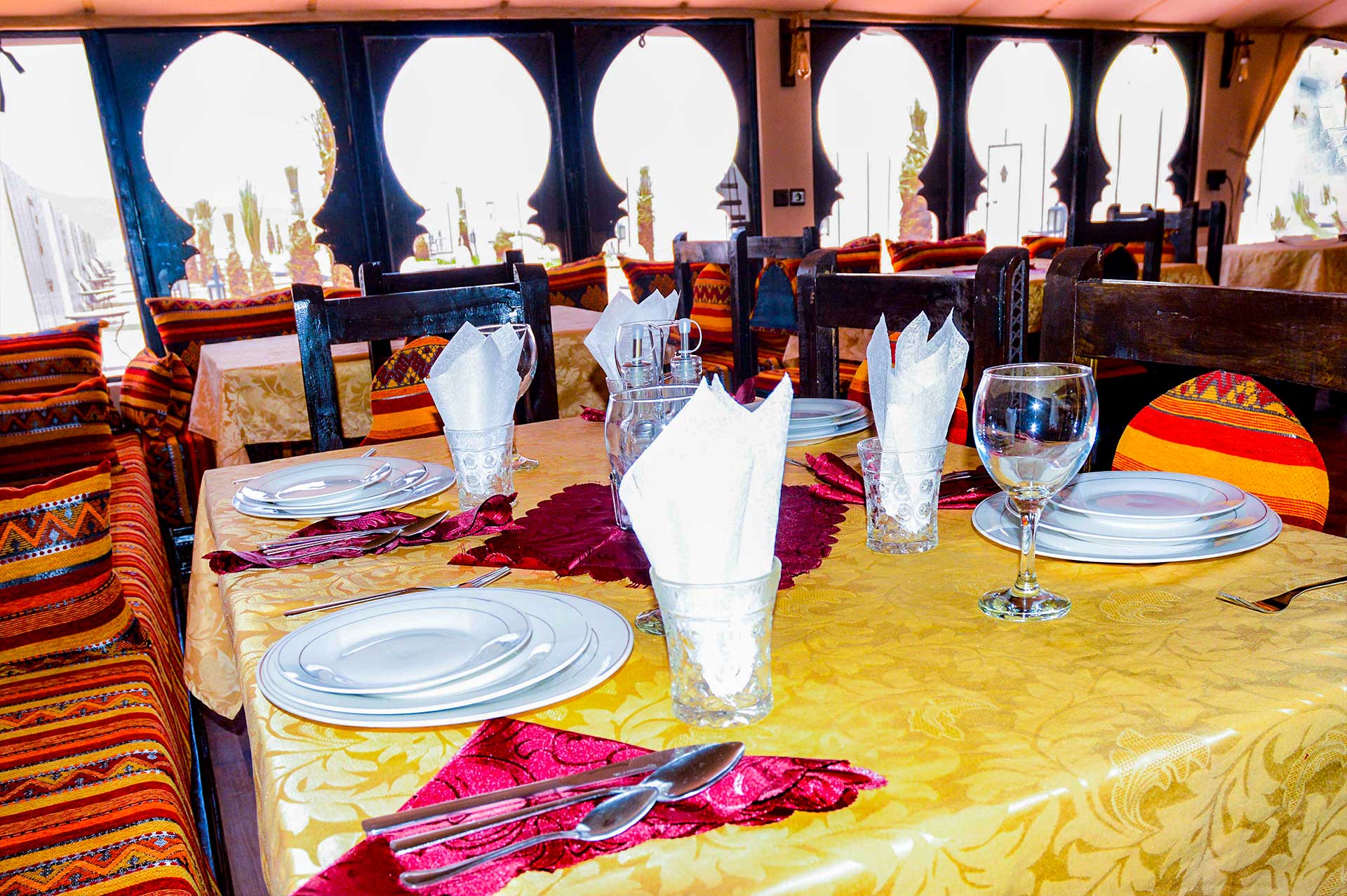
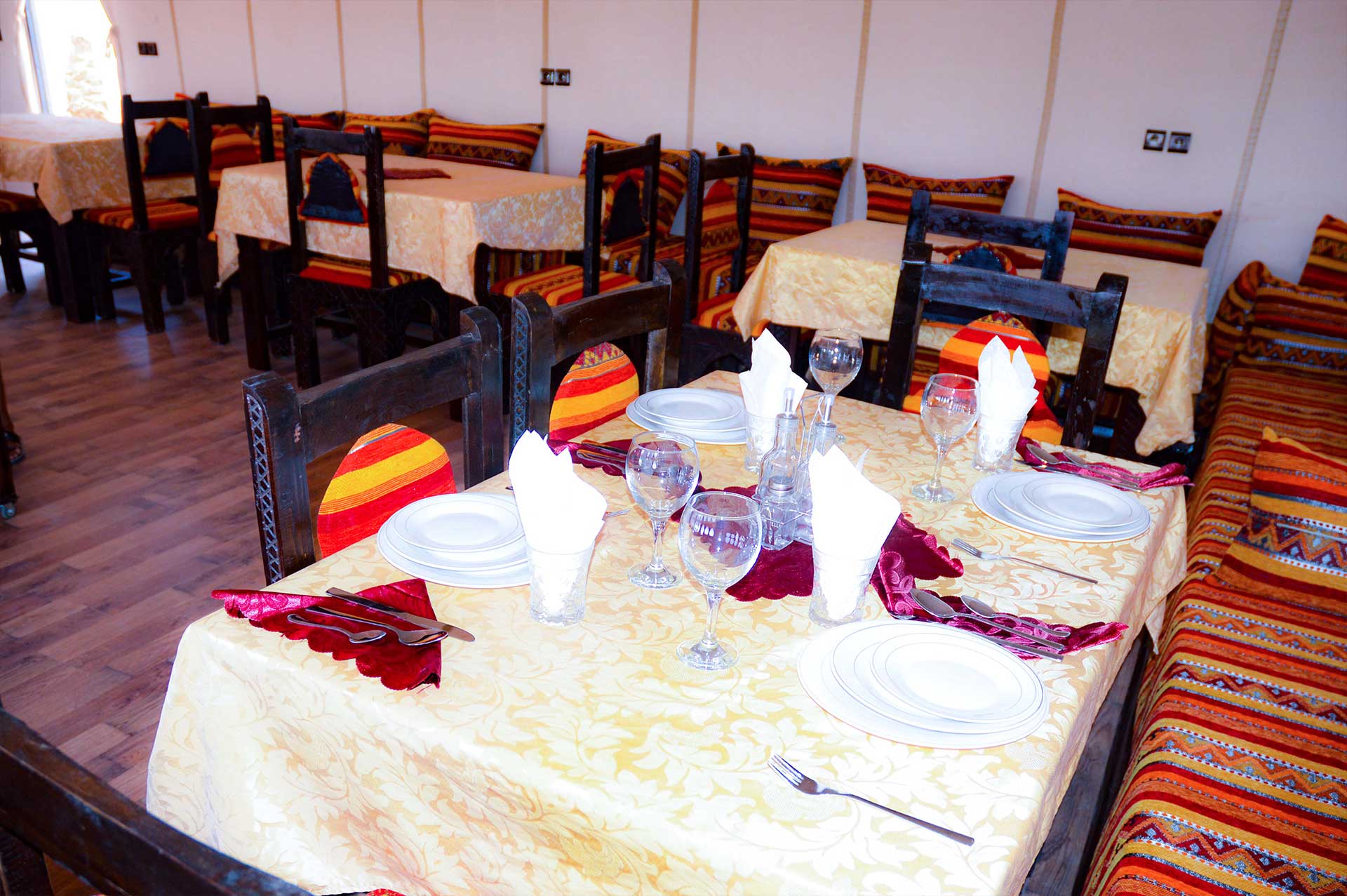
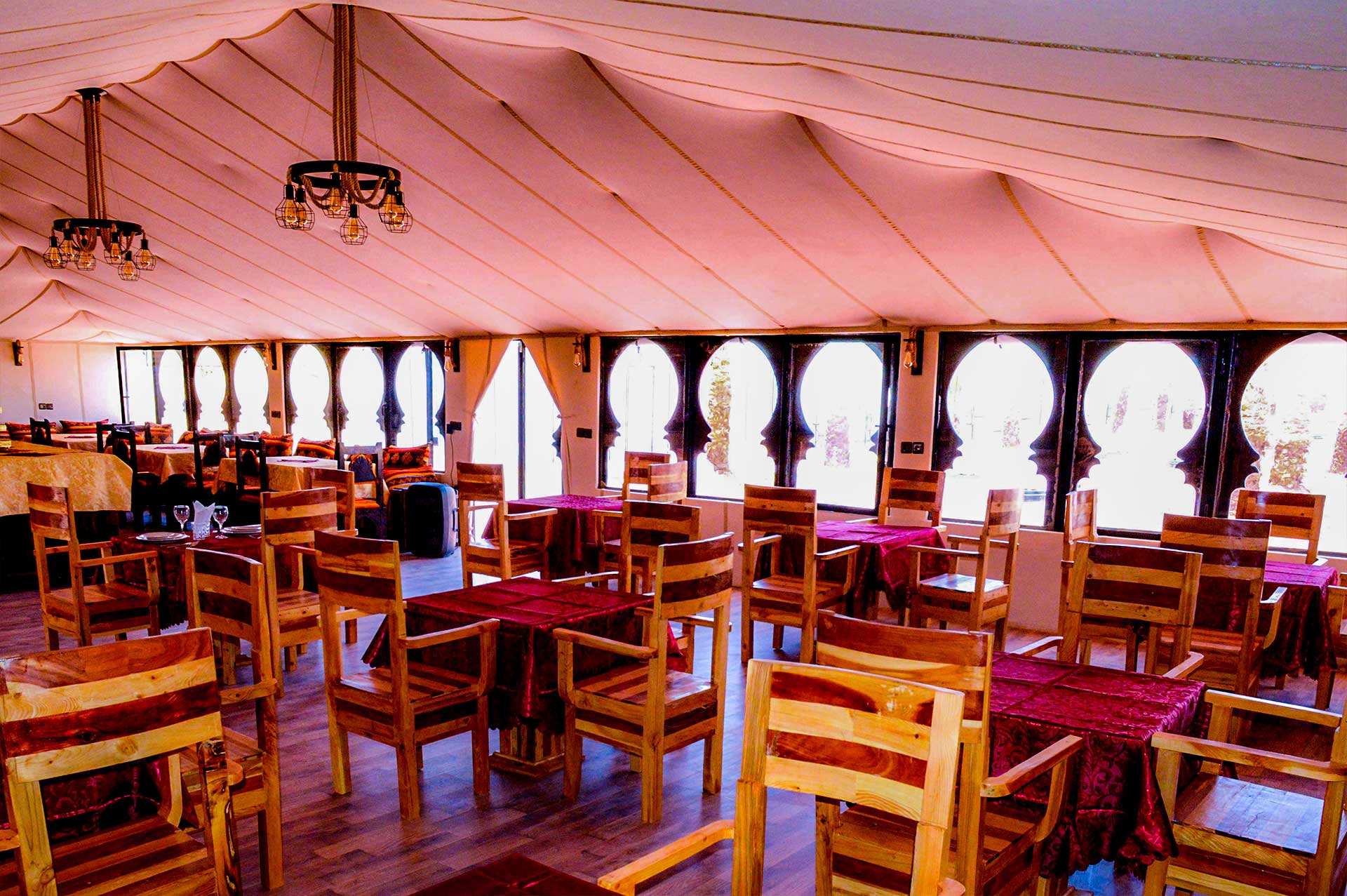
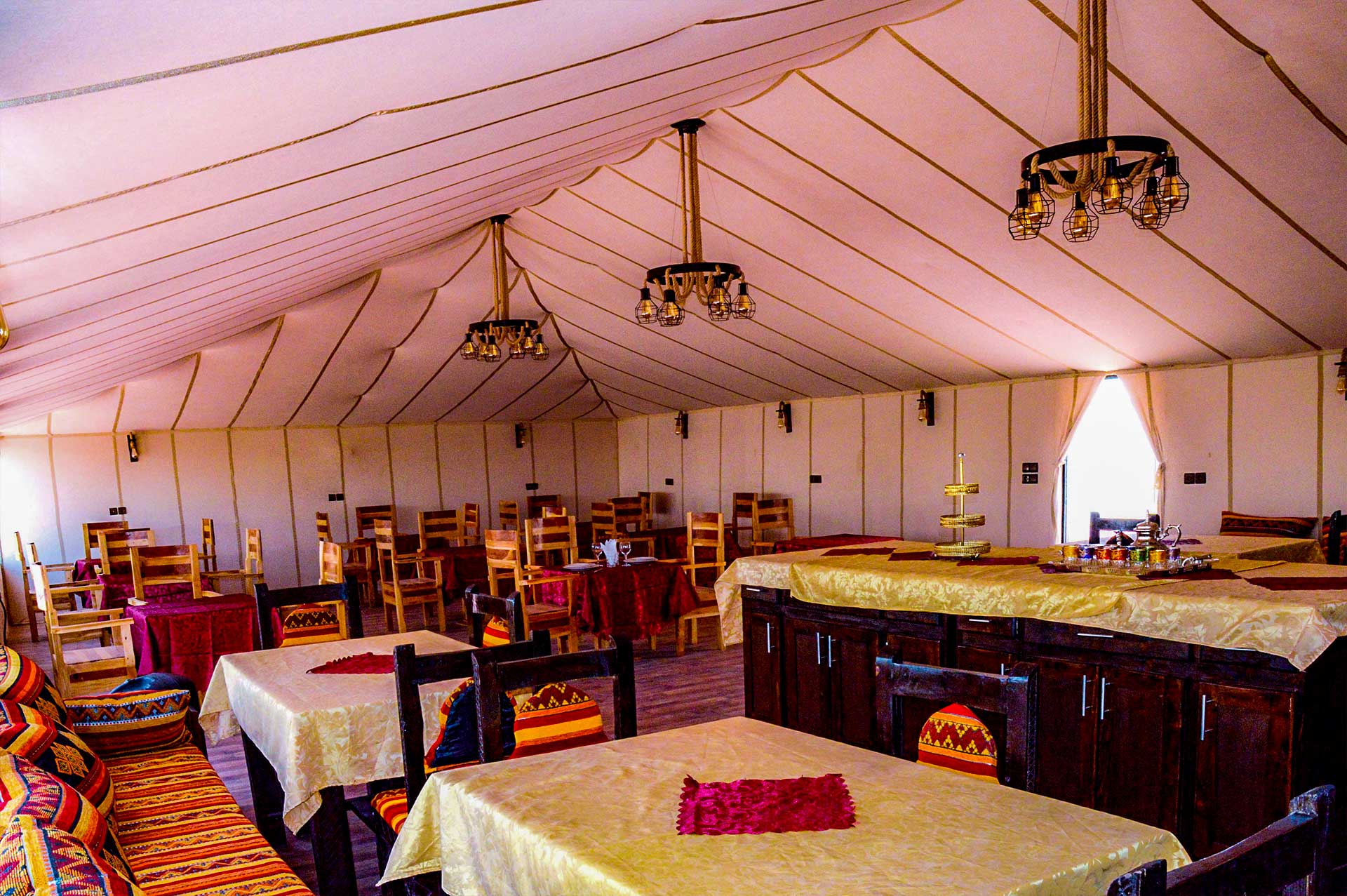
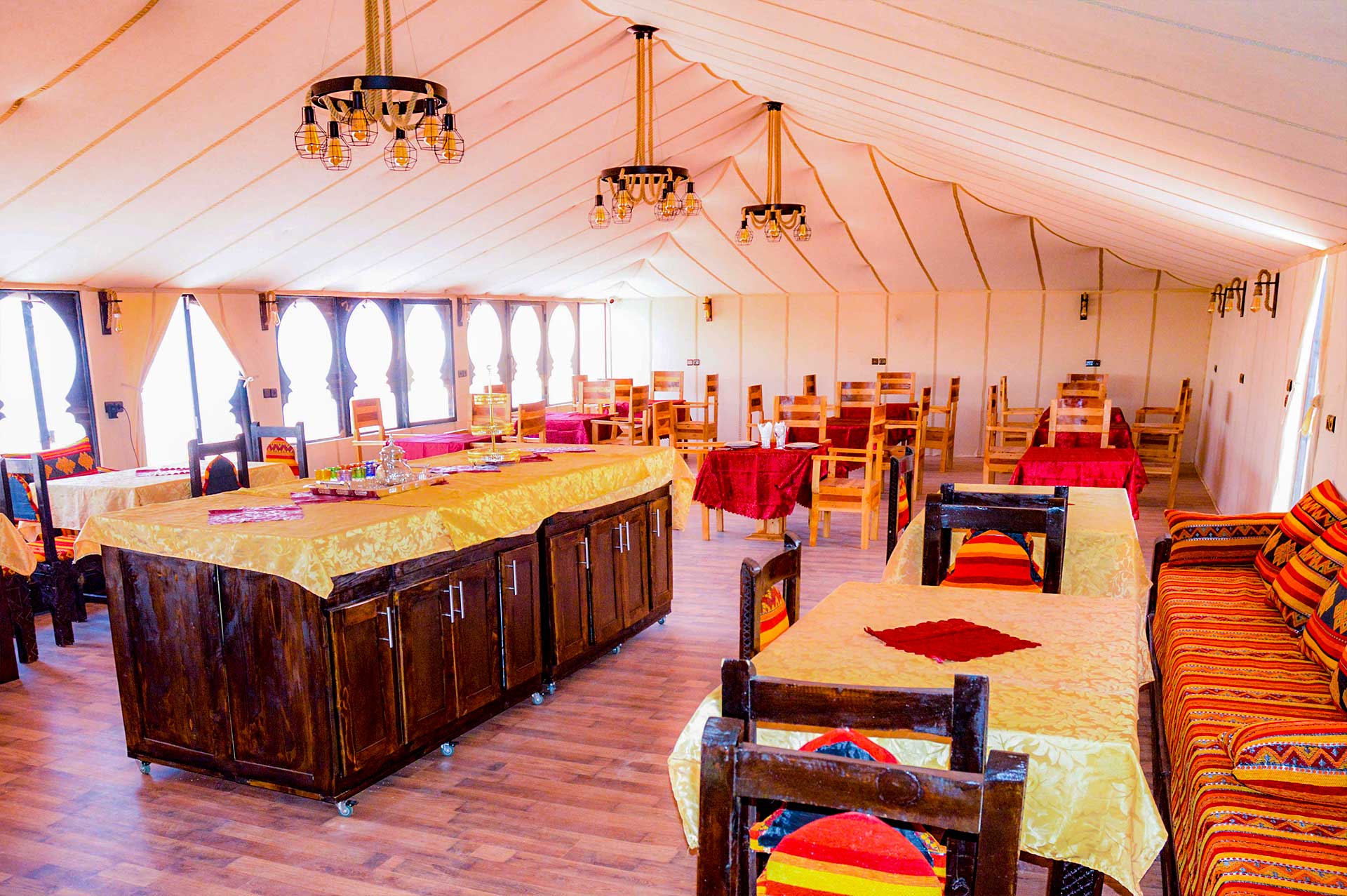
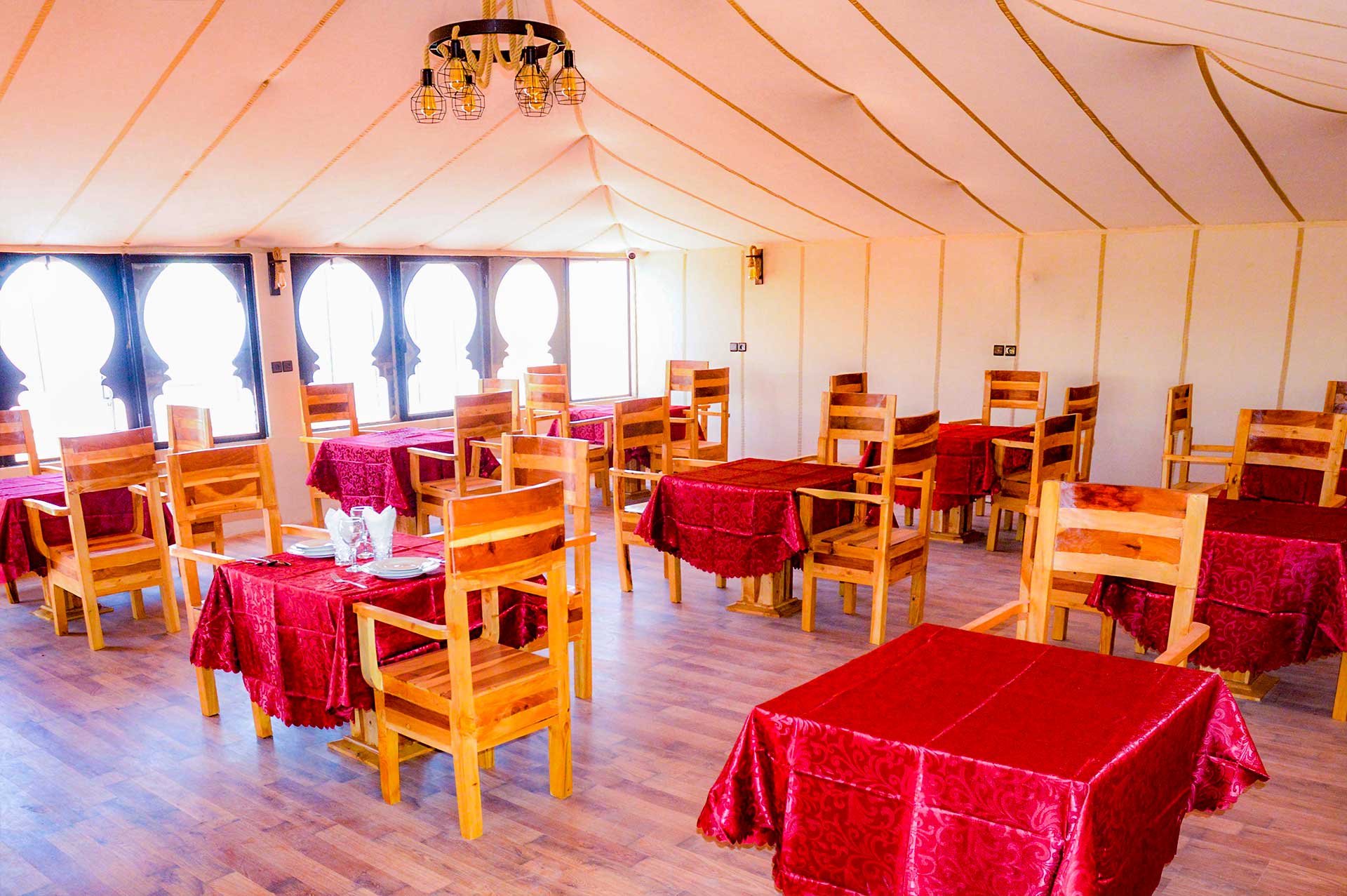
Why The Moroccan Cuisine is Populare?
Moroccan cuisine is a delightful fusion of flavors, colors, and aromas that reflect the country’s rich history, diverse cultural influences, and abundant natural resources. With its unique blend of Berber, Arab, and Mediterranean culinary traditions, Moroccan cuisine has gained international acclaim for its bold spices, aromatic herbs, and harmonious combination of sweet and savory flavors.
One of the defining characteristics of Moroccan cuisine is the skilled use of spices. The aromatic blend of spices, known as “ras el Hanout,” is a cornerstone of many Moroccan dishes. Cinnamon, cumin, ginger, turmeric, paprika, saffron, and coriander are just a few of the spices that give Moroccan cuisine its distinctive taste. These spices are used to create complex and flavorful tagines, stews, and marinades that are the heart of Moroccan cooking.
Tagine is one of the most famous Moroccan dishes and is named after the conical clay pot in which it is traditionally cooked. This slow-cooked stew can be made with various combinations of meats, such as lamb, chicken, or beef, and a variety of vegetables and fruits. The flavors meld together as the tagine simmers, resulting in a tender, aromatic dish. Prunes, apricots, dates, and almonds are often added to tagines to lend a delicate sweetness that balances the spices.
Couscous is another staple of Moroccan cuisine and is considered the national dish. Made from semolina wheat, couscous is often served with a flavorful meat or vegetable stew poured over it. The couscous grains are steamed to perfection, creating a fluffy texture that soaks up the savory flavors of the accompanying dish. It is common to find couscous served with tender chunks of lamb or chicken, along with a variety of vegetables such as carrots, zucchini, and chickpeas.
Moroccan cuisine also features an array of delicious street foods and snacks. The aromatic scent of freshly baked bread wafts through the bustling markets, where vendors sell an assortment of pastries, savory treats, and sweet delicacies. Moroccan pastries, like the popular almond-filled “Kaab el Ghazal” (gazelle horns) or the honey-drenched “Shebakia,” showcase the country’s love for rich, indulgent desserts.
Mint tea, known as “atay,” is an integral part of Moroccan culture and hospitality. This sweet and refreshing tea is brewed with fresh mint leaves and served in small glasses, often accompanied by sweet pastries or nuts. Sharing mint tea with friends and family is a cherished tradition, and the drink is considered a symbol of hospitality and warmth.
Moroccan cuisine draws inspiration from its coastal location as well. The country’s proximity to the Atlantic Ocean and the Mediterranean Sea provides an abundant supply of fresh seafood, which is widely enjoyed. Grilled sardines, fish tagines, and shrimp pastillas are just a few examples of the delightful seafood dishes found in coastal regions.
In addition to its savory dishes, Moroccan cuisine boasts a wide variety of fresh salads and appetizers. Salads often incorporate ingredients like tomatoes, cucumbers, peppers, olives, and fresh herbs, dressed with lemon juice and olive oil. Popular appetizers include “Briouats” (stuffed pastries), “Zaalouk” (roasted eggplant dip), and “Harira” (a hearty tomato and lentil soup).
Overall, Moroccan cuisine is a vibrant and flavorful culinary tradition that reflects the country’s cultural diversity and geographic influences. From the aromatic spices to the succulent tagines and the sweet delights of the pastries, Moroccan cuisine offers a captivating gastronomic experience that continues to captivate food enthusiasts worldwide.
What is unique about the cuisine of Merzouga Desert, Morocco?
In the desert regions of Morocco, where the climate and landscape pose unique challenges, traditional cuisine has adapted to the environment. Here are some of the most popular dishes made in the desert:
- Madfouna: Madfouna is a traditional stuffed bread that is popular in the desert regions of Morocco. It is similar to a flatbread or a large savory pie. The dough is filled with a mixture of vegetables, herbs, and spices, along with meat such as lamb or chicken. The filled dough is then baked in a clay oven or over hot coals, resulting in a delicious and satisfying meal.
- Mechoui: Mechoui is a succulent roasted lamb dish that is a staple in Moroccan desert cuisine. A whole lamb is slowly cooked over a spit or in a traditional underground oven called a “zanati.” The lamb is seasoned with a blend of spices and herbs, typically including cumin, paprika, garlic, and coriander. The slow roasting process results in tender and flavorful meat with a crispy exterior.
- Rfissa: Rfissa is a traditional dish that is often prepared for special occasions and gatherings in desert regions. It consists of shredded chicken or meat cooked with lentils and aromatic spices, such as ginger, cinnamon, and turmeric. The mixture is then layered with thin layers of traditional Moroccan crepes called “msemen” and topped with a drizzle of savory sauce. Rfissa is known for its rich and complex flavors.
- B’stilla: B’stilla, also spelled pastilla, is a unique and indulgent dish commonly associated with Moroccan cuisine. It is a savory pie that combines layers of flaky phyllo pastry, shredded chicken or pigeon, aromatic spices like saffron and cinnamon, and a sprinkling of toasted almonds and powdered sugar. The combination of sweet and savory flavors in B’stilla is a delight for the taste buds.
- Chebakia: Chebakia is a sweet and aromatic pastry that is popular during festive occasions and Ramadan in the desert regions of Morocco. It is made by shaping the dough into intricate flower-like designs and deep frying it until golden brown. The fried pastries are then soaked in fragrant honey and rosewater syrup, which imparts a deliciously sweet and floral flavor.
- Harira: Harira is a hearty and nourishing soup that is enjoyed throughout Morocco, including the desert regions. It is often served to break the fast during Ramadan. The soup typically contains a base of tomatoes, lentils, chickpeas, and a variety of herbs and spices, including coriander, turmeric, and ginger. It is a comforting and flavorful dish, perfect for sustaining energy in the desert climate.
These dishes showcase the ingenuity and adaptability of Moroccan cuisine in the desert regions, where flavorful ingredients and traditional cooking techniques come together to create delicious and satisfying meals.
